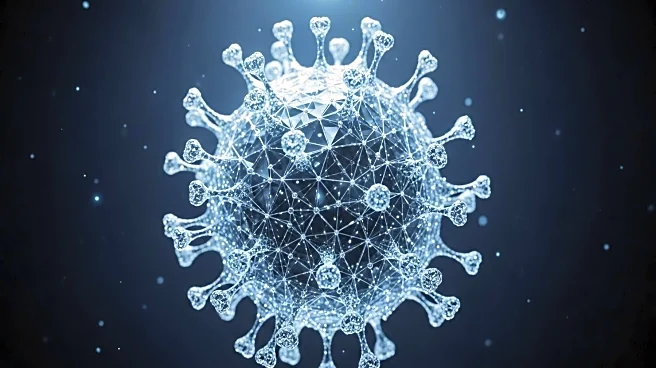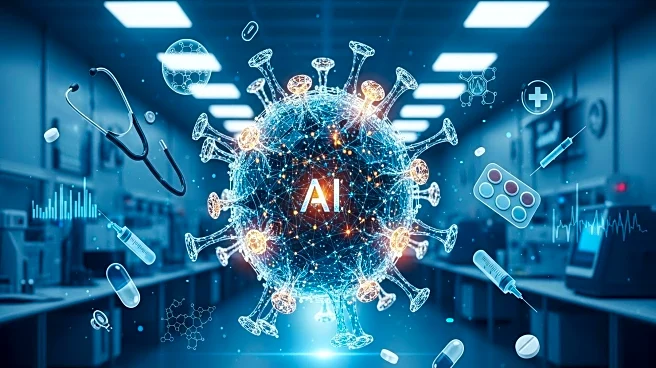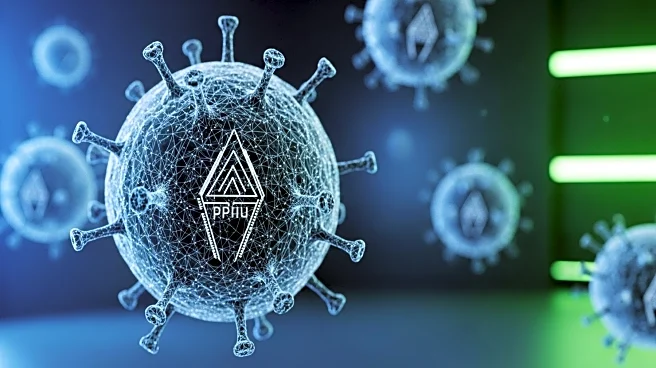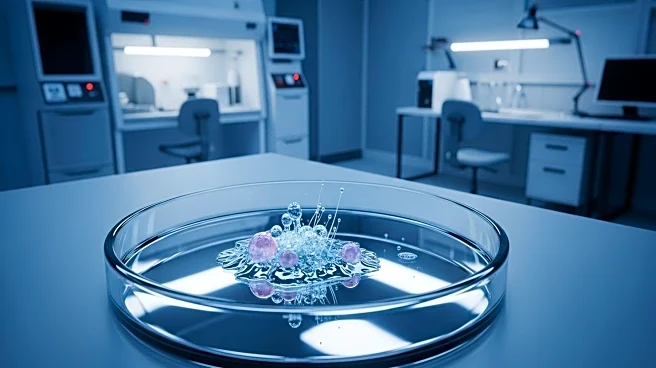What's Happening?
Researchers at Stanford University have achieved a significant milestone in biotechnology by using artificial intelligence to design viruses from scratch. The AI models were trained to write entire genomes for bacteriophages, which are viruses that infect bacteria. These AI-generated phages were synthesized in the lab and successfully targeted drug-resistant E. coli bacteria. This marks the first instance of AI systems creating coherent genome-scale sequences, a step towards AI-generated life. The research, although not yet peer-reviewed, suggests the potential for custom microbes to fight infections, offering a new avenue for combating antibiotic-resistant bacteria.
Why It's Important?
The ability to design viruses using AI represents a major advancement in genetic engineering and biotechnology. This breakthrough could revolutionize the development of new biomedical therapies, particularly in the fight against superbugs that have developed resistance to traditional antibiotics. The implications for public health are significant, as AI-designed phages could provide targeted solutions to combat infections that are difficult to treat with existing methods. However, this development also raises ethical and safety concerns regarding the synthesis of viruses, highlighting the need for careful regulation and oversight in the application of AI in biotechnology.
Beyond the Headlines
The creation of AI-designed viruses opens up discussions on the ethical and safety implications of synthetic biology. The ability to manipulate the building blocks of life using AI could lead to unprecedented advancements in medicine, but also poses risks if not properly managed. The potential for AI-generated life forms necessitates a reevaluation of existing bioethical frameworks and regulatory measures to ensure responsible use of this technology. As AI continues to merge with genetic engineering, it may redefine the boundaries of what is possible in biotechnology, prompting ongoing debates about the balance between innovation and safety.










